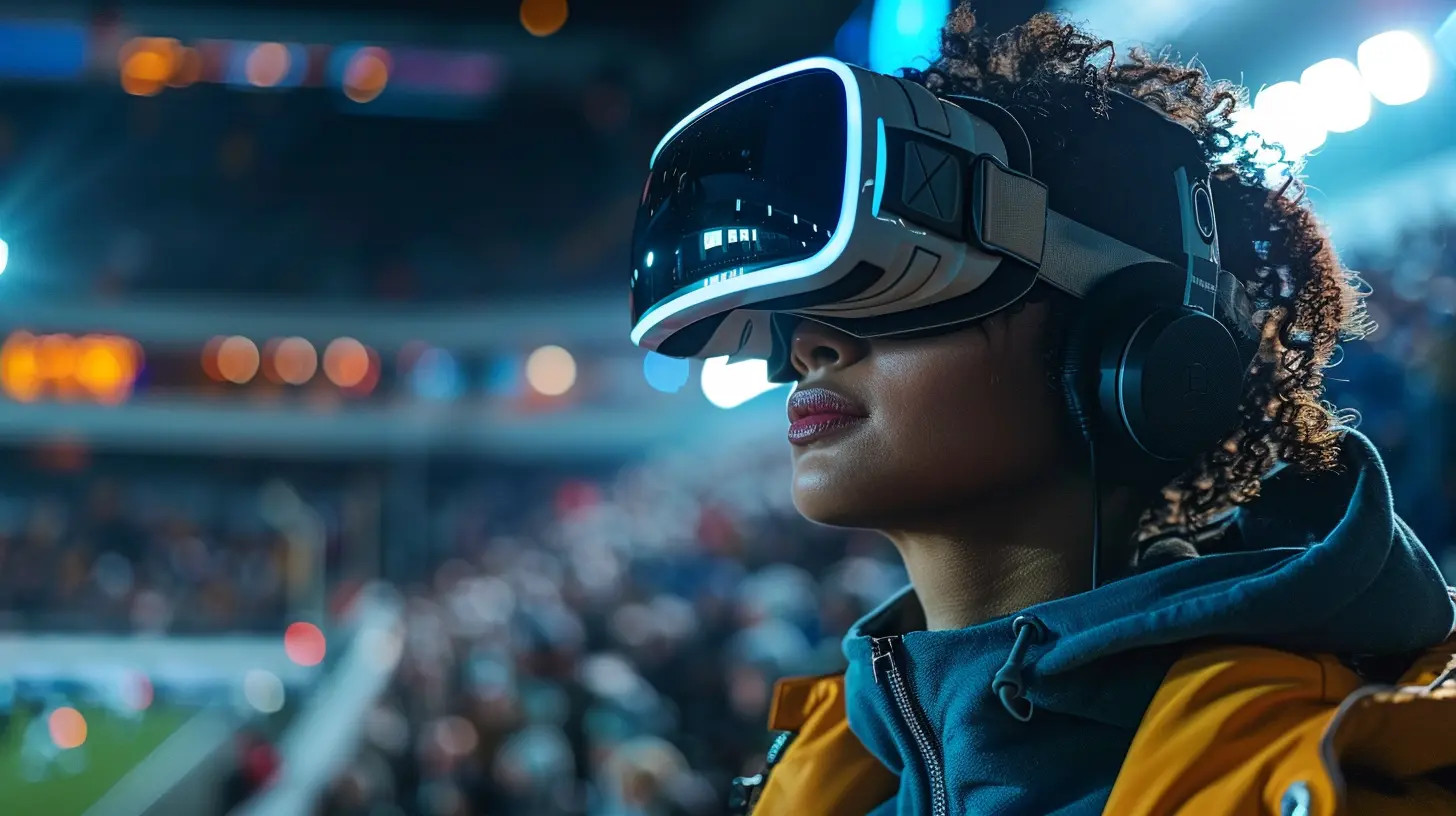The Future of Broadcasting Professional Sports: Streaming, VR, and Beyond
27 August 2025
The world of sports broadcasting is evolving faster than ever. Remember the days when cable TV was the only way to watch your favorite team play? Those days are fading fast. Now, with streaming services, virtual reality (VR), and other emerging technologies, the future of sports broadcasting looks nothing like the past.
So, what's next? Will VR make attending a game from your couch feel like you're right on the field? Will cable TV completely disappear? Let’s dive into the exciting future of sports broadcasting and see where this revolution is heading.

The Death of Traditional Cable TV in Sports
For decades, cable TV dominated sports broadcasting. ESPN, Fox Sports, and NBC controlled the biggest games, locking fans into expensive cable bundles. But as streaming services emerged, fans started cutting the cord at record rates.Why pay $100+ a month for cable when you can watch the same games (or even more) for half the price on platforms like ESPN+, YouTube TV, and Amazon Prime Video? The shift is undeniable – traditional cable is struggling to keep up.
Even sports leagues are taking notice. The NFL, NBA, and MLB are securing massive deals with streaming platforms as they realize that the future is digital. In fact, Amazon already secured exclusive rights to Thursday Night Football, marking a major shift toward streaming dominance.
So, will cable TV survive? Not likely. The convenience, affordability, and flexibility of streaming services are proving to be a game-changer for sports fans worldwide.

The Rise of Streaming Services in Sports Broadcasting
Streaming isn't just a trend – it's the future. And it's not just about watching a game live; it's about having more control over how you experience it.More Choices, More Flexibility
Unlike traditional TV, streaming services offer fans the freedom to choose what and when to watch. Want to catch a specific game without paying for a bunch of extra channels? Done. Need to rewind a crucial play? Easy.Interactive Features
Streaming platforms are integrating interactive features that revolutionize the way we engage with sports. Imagine watching an NBA game with real-time stats, live betting options, or instant replay on-demand. Some platforms even let you switch between multiple camera angles!Personalized Content
AI is changing the game by learning what you love to watch. With personalized recommendations, you’ll never miss your favorite team’s game again. Some platforms even allow fans to customize their own highlight reels based on the plays they care about most.With all these perks, streaming is quickly becoming the go-to choice for sports fans all over the world.

Virtual Reality: The Next Frontier in Live Sports
Streaming is great, but what if you could feel like you're actually inside the stadium? That’s where virtual reality (VR) comes in.Courtside Seats from Your Couch
VR technology is making it possible to experience live sports in an entirely new way. Imagine sitting courtside at an NBA game or getting a front-row view at the World Cup – all without leaving your living room.360-Degree Viewing Experience
With VR headsets, you can look around and take in every detail of the game from angles you’d never see on TV. Want to watch from the perspective of a quarterback? How about the view from behind the goal line? VR makes it possible.Immersive Fan Engagement
Some companies are even experimenting with creating virtual sports bars where fans can watch games together in a digital space. Think of it as a futuristic sports pub where you and your friends, no matter where they live, can watch the big game as if you're sitting side by side.While VR is still in its early stages, it’s clear that it has the potential to completely change how we experience sports in the years to come.

Augmented Reality (AR) and Holograms: A Glimpse Into the Future
If VR sounds futuristic, then get ready for augmented reality (AR) and holographic broadcasting. These technologies are already making waves in sports broadcasting, and they could soon make watching sports even more immersive.AR Graphics and Real-Time Stats
Augmented reality is already being used to enhance sports broadcasts. Ever noticed those on-screen graphics during football games, like the first-down line? That’s AR in action. But it’s just the beginning.Picture this — watching a game with AR glasses that overlay real-time player stats, speed measurements, and even instant fantasy football updates right before your eyes. AR could take the viewing experience to a whole new level.
Holographic Sports Viewing
Hologram technology might sound like something out of a sci-fi movie, but it’s closer to reality than you think. Imagine watching a full-sized, 3D projection of an NBA game right in your living room. Instead of watching on a screen, the game could unfold in front of you, making you feel like you're inside the action.With companies like Microsoft and Apple investing heavily in AR and holographic technology, it might not be long before watching a game in this futuristic way becomes the norm.
The Role of AI and Machine Learning in Sports Broadcasting
AI is slowly but surely taking over the sports broadcasting industry, and for good reason.AI-Powered Commentators
AI now has the ability to analyze games in real-time and generate commentary based on the action. While human commentators will always add personality and emotion, AI-powered commentary could provide deeper insights, advanced analytics, and instant data-driven analysis.Instant Highlights and Smart Predictions
AI-powered systems can instantly create game highlights, predict the outcome of matches, and even suggest alternate camera angles based on what each viewer prefers. This level of personalization ensures that every fan gets the exact experience they want.Automated Sports Journalism
With AI, post-game reports and player performance breakdowns can be generated instantly, creating more dynamic and data-driven storytelling for sports fans.AI is set to redefine sports broadcasting, making it more efficient, engaging, and tailored to each viewer’s interests.
The Future: What Comes Next?
So, where does all of this leave us? The future of sports broadcasting is heading to a place we could only dream of a decade ago.- Traditional cable TV is fading, giving way to a streaming-first world.
- VR is making sports more immersive than ever, bringing fans right into the action.
- AR and holograms could redefine how we watch games, making it a visual spectacle unlike anything we’ve seen before.
- AI is making sports broadcasting smarter, offering hyper-personalized experiences for every fan.
One thing is certain – change is coming, and it’s coming fast. The way we consume sports a decade from now will be almost unrecognizable compared to today.
So, are you ready for the future of sports broadcasting? Because it’s already knocking on the door.
all images in this post were generated using AI tools
Category:
Professional SportsAuthor:

Onyx Frye
Discussion
rate this article
1 comments
Bria McMillen
Exciting insights! Looking forward to the future!
September 23, 2025 at 4:47 AM

Onyx Frye
Thank you! I'm glad you found it insightful. Exciting times ahead!


